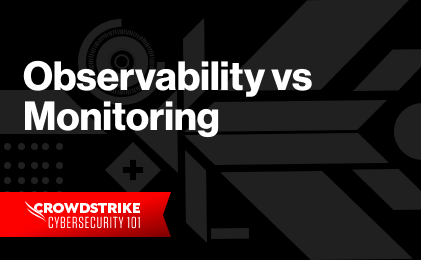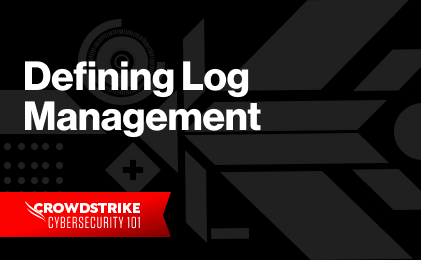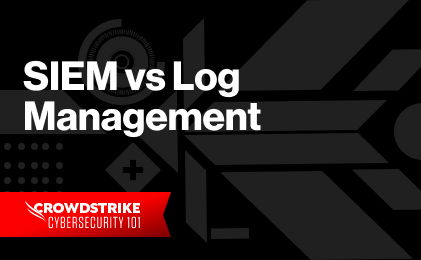What Is Observability?
While it may seem to be a new buzzword invented by the tech world, the concept of observability was actually introduced in engineering control theory almost a century ago. In simple words, observability is when you infer the internal state of a system only by observing its external outputs.
When translating this concept to software development and modern IT infrastructure, a highly observable system exposes enough information for the operators to have a holistic picture of its health. When observability is implemented well, a system will not require operations teams to spend much effort on understanding its internal state.
Observability doesn’t center around technology. It’s a practice involving a set of processes and the associated tools to achieve the desired level of insight into the system. In this post, we’ll look at the key concepts involved in observability:
- The key components that make up observability
- Why observability is important
- The difference between monitoring and observability
- What to look for in an observability platform
The Basics of Observability: Key Components
Most observability tools deal with the three pillars of observability: logs, metrics, and traces. Some tools provide an interface to deal with a separate aspect of observability: events.
Metrics
Metrics are counters or measurements of a system characteristic during a time period. Metrics are numeric by definition and represent aggregated data. Examples of metrics can be average CPU usage per minute per server or the number of requests returning errors per JVM each day. Metrics can be collected from infrastructure, applications, load balancers, and even applications.
Logs
Logs are intended to leave clues on what part of the codebase a request has reached, and if the application encountered anything unexpected or abnormal in processing that request. Logs can also be used to capture access attempts, as in the case of access logs. Logs can be generated by the application responding to requests or by the operating system (for example, syslog or the Windows Event Log).
Traces
Traces are similar to logs, but they provide operators with visibility into actual code steps. For example, traces could shed light on which method or service a certain request traversed before finishing (or crashing). Due to their nature, traces tend to be sampled and not stored for all requests. The ability to capture traces depends on the capabilities of your chosen observability platform or library.
Using metrics, an operator can identify when the system is operating slower than usual. Operators can then use traces to identify which part of the system is slower than usual and if it needs to be addressed; for further analysis, they can check logs for errors and exceptions.
Events
In addition to the three pillars, you can use events to increase the observability of a system. For example, you can decide that every time an admin user executes a privileged task, the system registers an event in an observability tool. Events are registered with specific actions (for example, the execution of a function, the updating of a database record, or an exception thrown by the code). Analyzed over time, events can help determine patterns. Alternatively, structured logs can also be used as low-level events.
Observability is important for the business continuity of your most critical systems. Those critical systems often include:
- Applications
- Containers
- Infrastructure
- Networks
- Data sources
- Edge computing nodes
The more critical a component is to your overall system, the more important it is to invest in its observability.
Why do we need observability?
Observability isn’t a goal in itself, but rather a practice to reach the availability and reliability requirements of the business. Its goal is to reduce the mean time to repair (MTTR) and increase the mean time between failures (MTBF). This can happen only if operators are able to troubleshoot production problems quickly, identify problems before they become incidents, and apply proactive measures.
Operations teams use observability to get a complete picture of the systems they manage, and SecOps can use observability tools to find any breaches or malicious activity.
From an engineering perspective, observability allows developers to catch bugs early in the development cycle, resulting in higher confidence in software releases. This encourages the drive for innovation while maintaining quality software and higher release velocity. Support teams are also empowered, particularly when using Real User Monitoring (RUM), which leads to better collaboration between teams and better support for customers.
Not only do customers receive better products, but they also have a more reliable service. This is because engineers and support teams can identify issues and apply proactive fixes. A high level of observability can also expose the “unknown unknowns”—issues that were previously not known to have existed.
Monitoring and Observability
One point of confusion often encountered is the difference between observability and monitoring.
Monitoring is the action of continuously checking the metrics and logs of a system to determine if the system is unhealthy or needs manual intervention. Monitoring also centers around measuring individual components in isolation (such as the server, network, or database).
Observability, on the other hand, has a broader scope. That’s because it has to correlate all the data collected—including monitoring data—to show where exactly something is going wrong. In other words, monitoring tells you that something is not right, and observability tells you where that problem lies. While different, monitoring and observability go hand-in-hand, both dealing with the outputs of a system.
Choosing an Observability Platform
A good observability platform is an enterprise asset. It can help the business achieve security, reliability, and availability goals. Therefore, the choice of observability platform is an important one.
Modern IT systems are complex. Most are distributed, potentially multi or hybrid cloud, and have requirements for high availability. They are also often the target of malicious attacks.
A distributed system as complex as this can generate an enormous amount of observable data. A good observability platform should be able to retrieve data from all these sources, store and sift through it in a timely fashion, and build meaningful pictures from that data. Additionally, it should be able to separate the signal—that is, events of interest—from the noise. A good observability platform should correlate and enrich data to find anomalies and trends for operators.
You can use the list below to assess the suitability of an observability platform. In short, the platform of choice should be able to:
- Integrate with all of your systems across each of your application stacks, either natively or through reliable plugins.
- Install in an automated, reproducible way.
- Capture real-time data from all target components and store, index, and correlate them in a meaningful and cost-effective way.
- Show an overall picture of your complex system in real time.
- Provide traceability to show where exactly something is going wrong and how. It should be able to do this by separating important information from noise.
- Provide historical trends and anomaly reports.
- Show all relevant, contextual data to any alerts or reports.
- Help users with an easy-to-use interface while still allowing for the creation of customized, aggregated reports for different teams.
Discover the world’s leading AI-native platform for next-gen SIEM and log management
Elevate your cybersecurity with the CrowdStrike Falcon® platform, the premier AI-native platform for SIEM and log management. Experience security logging at a petabyte scale, choosing between cloud-native or self-hosted deployment options. Log your data with a powerful, index-free architecture, without bottlenecks, allowing threat hunting with over 1 PB of data ingestion per day. Ensure real-time search capabilities to outpace adversaries, achieving sub-second latency for complex queries. Benefit from 360-degree visibility, consolidating data to break down silos and enabling security, IT, and DevOps teams to hunt threats, monitor performance, and ensure compliance seamlessly across 3 billion events in less than 1 second.


